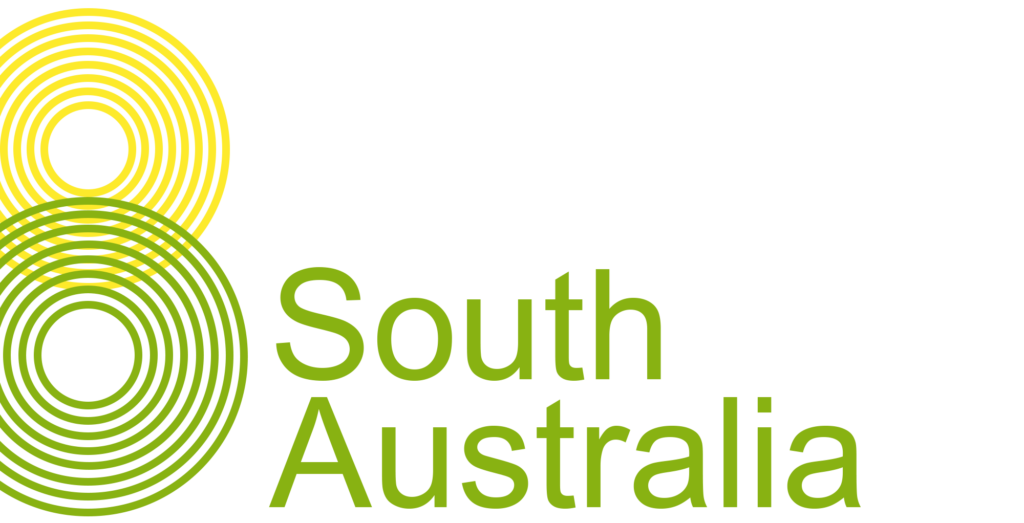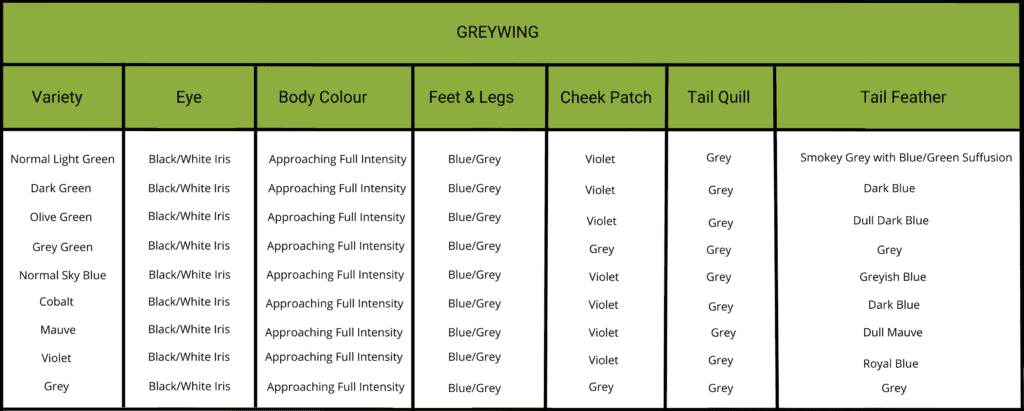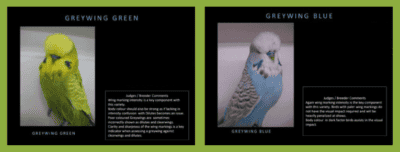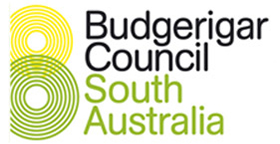
Greywing Budgerigar/Budgie
Records show that the Greywing budgerigar first appeared in England during the early 1920’s. However, fanciers believe that a Greywing budgie, then known as an apple green, existed in Germany and Belgium as far back as 1875.

Image Courtesy of Rod Turnbull and the ANBC
The first Greywing greens appeared under various names (Jades, May or Apple) from about 1920 to 1925. However, in 1928, the first Greywing Skyblue (known as a Pearl) was exhibited by a Mr. Hedges. Shortly thereafter, Cobalt Greywings and Mauve Greywings appeared. As a result, the variety quickly established in Australia. Furthermore, in the 1930s, Australian fanciers produced Greywings with a much deeper body colour than before. At this time, fanciers called them full body coloured Greywings. As a result, experts now consider this body colour intensity as the “perfect Greywing”. As such, experts have written the exhibition Standard around this level of intensity. The old variety featuring 50% body colour is now penalised for lack of colour on the show bench.
Identification of the Greywing Budgerigar
The Greywing budgerigar displays full intensity in color in its general body, rump, and underparts, as stated by The Standard. Additionally, it has the appropriate normal equivalent ground color on the face and clean forehead. While yellow is the ground color for the face and forehead in the green series and white in the blue series, the yellow face series is an exception. The mid-grey back and wing coverts (upper and under) have clearly defined markings, which are symmetrical on the ground color and free of any body color suffusion.
The deep and wide mask extends beyond two large cheek patches and ornaments the ground color with six clearly defined large symmetrical grey throat spots, with the base of the cheek patches partially covering the outer spots. The Greywing has a dark eye with white iris ring, and the feet are a mottled bluish grey in color. The cock has a blue cere whilst the hen has a brown cere.
Below is a summary of the Greywing’s cheek patch, tail quill, and tail feather colors.

Judging Notes on Greywing Budgies
Greywing, Clearwing, and Dilute are generally considered allelic mutations of the same gene. Additionally, Black Eyed Self emerges as a phenotypic variant of Dilute, primarily created through the selection of the Dilute mutation for color modifiers. Interestingly, there’s a noticeable phenotypic consistency among all four of these mentioned varieties. Consequently, judges play a crucial role in ensuring alignment with the variety descriptions in the Standard, especially when breeders deviate from the ideal.
It is worth noting that Greywing and Clearwing are dominant over Dilute, implying that each can carry a hidden Dilute trait. Dilutes that originate from Greywings and Clearwings are identified purely as Dilutes. Importantly, they shouldn’t be termed as Dilute Greywings or Dilute Clearwings. However, the intensity of markings on their wings might differ due to the modifiers linked to Greywings and Clearwings. When observing the Greywing body color, it almost reaches full intensity. A common issue with Greywings is the appearance of smudged wing markings instead of distinct mid-grey markings.
Greywing Budgie Pairing Expectations
This mutation inherits in an autosomal recessive manner. To this end, both parents must carry the gene for offspring to express the trait. Producing chicks with the greywing trait can be hard due to its recessive inheritance, meaning that both the cock and hen need to be carriers.

Click here to view Pairing expectations in full.
To aid in identifying greywings in budgies, the ANBC offers valuable visual examples of the trait, showing the appropriate tail color for these. Below, you can find examples of the Normal Greywing budgie in both Green and Blue for reference purposes.

